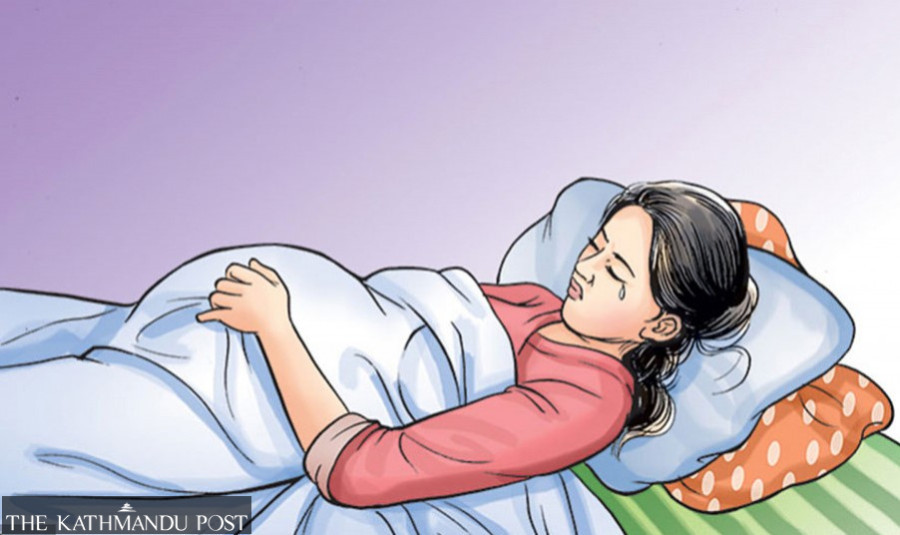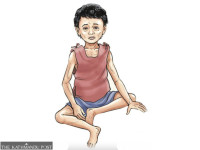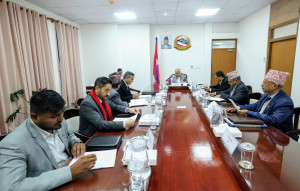Health
Supply delays deprive women and girls of iron, folic acid
Pregnant women, new mums, and girls aged 10-19 years have been deprived of the vital supplements since February. No relief before December.
Post Report
Iron and folic acid supply to state-run health facilities will not resume before December, as the process of procuring the crucial supplements has just started, officials said.
Due to a lack of such vital supplements in the state-run health facilities, hundreds of thousands of pregnant women, new mothers, and girls between 10 and 19 have been deprived of free iron and folic acid for months.
The disruption has raised concerns about the government’s failure to ensure continuous supply of the supplements critical to preventing anaemia.
“We have asked provincial and local health agencies to purchase iron and folic acid on their own and distribute them to pregnant women, new mothers, and girls between 10 and 19,” said Lila Bikram Thapa, chief of Nutrition Section at the Family Welfare Division of the Department of Health Services. “It takes several months to purchase the supplements by fulfilling all due procedures.”
The free iron and folic acid supplementation programme, which was initiated to reduce the high prevalence of anaemia among adolescent girls, pregnant women, and new mothers, has stalled since February.
Anaemia is a condition in which blood produces low levels of haemoglobin or healthy red blood cells. Iron and other nutritional deficiencies, malaria, infection with hookworm, chronic infections, and genetic conditions, including sickle cell diseases, are among the reasons for anaemia.
Doctors say anaemia in adults can cause fatigue, lethargy, reduced physical productivity, and poor work performance. It is a major concern among pregnant women, as problems can lead to increased maternal mortality and poor birth outcomes.
Doctors say anaemia during pregnancy increases multiple health risks including foetal growth retardation and low birth weight, premature delivery, increased perinatal mortality, and reduced resistance to infection for both mother and baby. The problem can impair the cognitive development of children and can have long-term health and economic implications for society.
Health ministry officials say the federal government has not purchased iron and folic acid tablets for the last two years, and has not allocated any budget for the programme. Responsibility for purchasing the supplement tablets was given to provincial government agencies, but they too have not made purchases.
“We last purchased the supplement tablets around three years ago and thought that the stock would be sufficient for the ongoing fiscal year,” said Thapa. “For the fiscal year 2025-26, we have allocated Rs90 million to procure the supplements.”
Health officials say that many local units have purchased the supplements from their own resources and distributed them to target groups.
Earlier, officials at the Ministry of Health and Population had requested aid agencies, including the Helen Keller International Nepal, Care Nepal, ADRA Nepal, and others, for financial support to purchase the supplement tablets for the three months of the ongoing fiscal year. However, it is not known if those agencies provide the support.
Nepal Demographic and Health Survey-2022 conducted by the ministry shows that 34 percent of women between the ages of 15 and 49 years were anaemic, 19 percent mildly anaemic, 15 percent moderately anaemic and one percent severely anaemic.
Women living in the Tarai region are more likely to be anaemic (45 percent) than those living in the hills (20 percent) and in the mountainous regions (23 percent). More than half the women (52 percent) are anaemic in the Madhesh Province.
The same study also divulged that 43 percent of the children aged between six and 59 months have been found to be anaemic—25 percent mildly anaemic, 18 percent moderately anaemic and one percent severely anaemic.
Madhesh province had the highest child anaemia rate at 50.6 percent, followed by 48.9 percent in Lumbini, 45.4 percent in Sudurpaschim, 42.5 percent in Bagmati, 39.8 percent in Karnali, 33.9 percent in Koshi and 30.7 percent in Gandaki province.
In the 1990s, three in four pregnant women in Nepal were anaemic. To address the growing burden of anaemia and resulting health consequences, the government had initiated an iron and folic acid supplementation programme in 2003.
Under the programme, all pregnant women above four months of pregnancy and new mothers up to seven weeks postpartum were given a supplementation tablet daily. Girls between 10 and 19 were given 26 tablets a year.




 7.12°C Kathmandu
7.12°C Kathmandu













